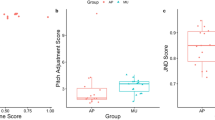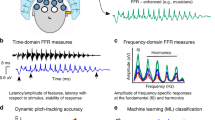Abstract
It is now more than eighty years since Helmholtz1 gave a functional explanation of the architecture of the cochlea, and at the same time supplied a plausible physical basis for the extraordinary pitch discrimination of which the human ear is capable. Recent authorities have implicitly or explicitly rejected Helmholtz's explanation of pitch discrimination. For example, Stevens and Davis2 say “Everything considered, then, we must conclude that the inner ear is highly damped and that this damping impairs its resolving power in the analysis of sound waves” (p. 287); and elsewhere it is implied that the damping is critical. We cannot here consider the evidence adduced by Stevens and Davis and by others in favour of high damping of the cochlea, and must limit ourselves to the blunt statement that it is inadequate. It is the purpose of this letter to put forward evidence, independent of pitch discrimination, which unequivocally supports Helmholtz's original belief.
This is a preview of subscription content, access via your institution
Access options
Subscribe to this journal
Receive 51 print issues and online access
$199.00 per year
only $3.90 per issue
Buy this article
- Purchase on Springer Link
- Instant access to full article PDF
Prices may be subject to local taxes which are calculated during checkout
Similar content being viewed by others
References
Helmholtz, âœTonempfindungâ (1862).
Stevens and Davis, âœHearingâ (1938); see also Gabor, Nature, 159, 591 (1947).
Shower and Biddulph, J. Acous. Soc. Amer., 4, 288 (1931).
Bürck, Kotowski and Lichte, Elek. Nachr. Tech., 12, 355 (1935).
Author information
Authors and Affiliations
Rights and permissions
About this article
Cite this article
PUMBHREY, R., GOLD, T. Transient Reception and the Degree of Resonance of the Human Ear. Nature 160, 124–125 (1947). https://doi.org/10.1038/160124b0
Issue Date:
DOI: https://doi.org/10.1038/160124b0
This article is cited by
Comments
By submitting a comment you agree to abide by our Terms and Community Guidelines. If you find something abusive or that does not comply with our terms or guidelines please flag it as inappropriate.



